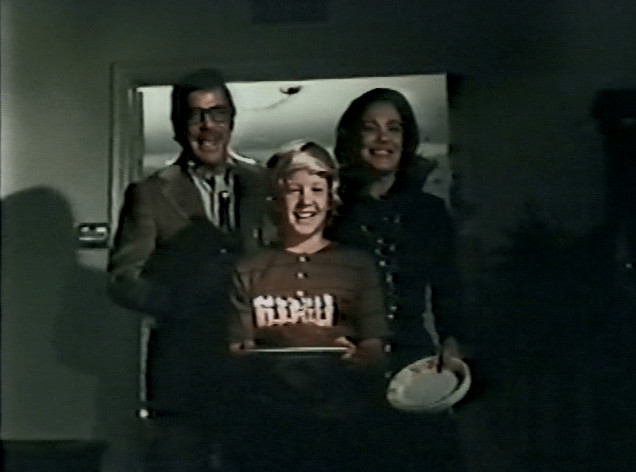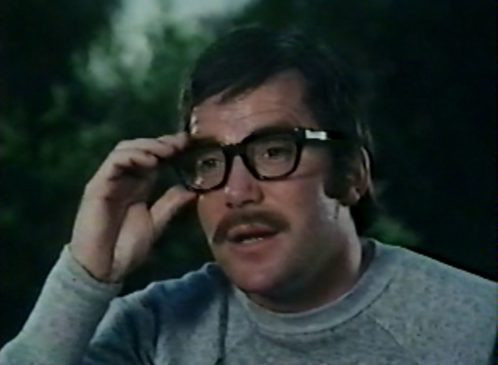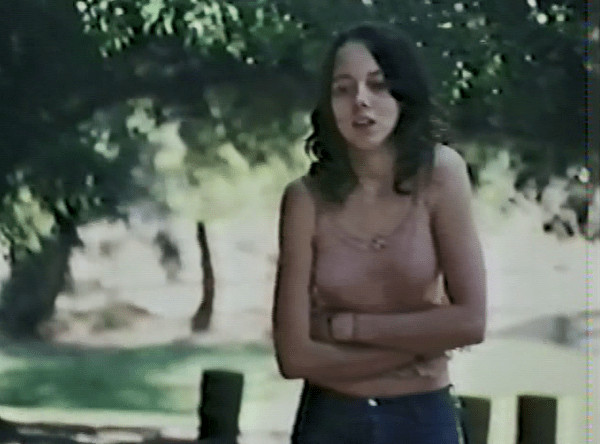In the annals of cautionary tales about the perils of drug use, few resonate as strongly as Go Ask Alice. Originally presented as the harrowing diary of a teenage girl descending into drug addiction, the 1971 book and the subsequent 1973 television movie starring William Shatner captivated a generation. But the title itself, Go Ask Alice, is not a random choice. It’s a direct reference to a lyric from the iconic Jefferson Airplane song, “White Rabbit,” a track deeply embedded in the psychedelic era and subtly exploring themes of altered perception, much like the narrative of Go Ask Alice itself.
This article delves into the world of Go Ask Alice, exploring its journey from a controversial book to a made-for-TV movie, and crucially, how it intertwines with the Go Ask Alice Song reference, “White Rabbit.” We’ll unpack the layers of this cultural artifact, examining its impact, its inaccuracies, and William Shatner’s role in bringing this cautionary tale to the small screen.
The Genesis of Alice: From Diary to Screen
The story of Go Ask Alice begins with the purported diary of an anonymous teenage girl. Published in 1971, it chronicled a descent into drug use, runaway experiences, and ultimately, a tragic overdose. Marketed as a genuine account, the book quickly gained traction, particularly within schools aiming to educate students about the dangers of drugs. Its raw and unflinching portrayal of addiction resonated with young readers and alarmed parents alike.
In 1973, ABC’s “Movie of the Week,” known for tackling socially relevant issues, adapted Go Ask Alice into a television film. Jamie Smith-Jackson took on the role of Alice, and William Shatner portrayed her father, Sam. This adaptation amplified the book’s reach, broadcasting its cautionary message to an even wider audience. The film adopted the book’s sensationalized approach, aiming to shock viewers into recognizing the supposed realities of teen drug abuse.
 Go Ask Alice Title Card
Go Ask Alice Title Card
“White Rabbit” and the Psychedelic Subtext
The title Go Ask Alice immediately flags a connection to Jefferson Airplane’s 1967 hit song, “White Rabbit.” This song, penned by Grace Slick, is a thinly veiled allegory for drug-induced experiences, drawing heavily on imagery from Lewis Carroll’s Alice’s Adventures in Wonderland. The lyrics, including “Go ask Alice, when she’s ten feet tall,” evoke the surreal and transformative nature of psychedelic experiences.
While “White Rabbit” is not explicitly about drug addiction in a negative light, its themes of altered perception, questioning reality, and venturing into the unknown resonate with the narrative arc of Go Ask Alice. The song’s popularity during the late 1960s counter-culture movement positioned “Alice” as a symbol of exploration and boundary-pushing, which ironically, the Go Ask Alice narrative attempts to warn against.
The movie utilizes “White Rabbit” during its opening credits, immediately setting a tone and establishing a cultural context. It links the film to the psychedelic era, a period of experimentation and social upheaval, while simultaneously framing drug use as a dangerous path, a stark contrast to the potentially celebratory undertones of the go ask alice song reference itself.
Shatner in the “Lost Years” and Fatherly Blindness
For William Shatner, Go Ask Alice fell within what is often termed his “Lost Years,” a period between the cancellation of Star Trek and the resurgence of his career with Star Trek: The Motion Picture. During this time, Shatner took on diverse roles in various projects, including TV movies like Go Ask Alice.
In the film, Shatner plays Sam, Alice’s father, portrayed as largely oblivious to his daughter’s escalating drug use. He and Alice’s mother remain remarkably out of touch with the obvious signs of her addiction, even when confronted with direct evidence. This parental blindness serves as a key dramatic device in the movie, highlighting the supposed insidious nature of drug addiction and the potential for it to occur right under a parent’s nose.
One particularly memorable, and somewhat absurd, scene features Shatner singing an invented birthday song, “Stand up, stand up! Stand up and take your praise, your praise!” to a clearly inebriated Alice and her friends. This scene underscores the parents’ cluelessness and adds a layer of unintentional dark humor to the film.
 William Shatner in Go Ask Alice Birthday Scene
William Shatner in Go Ask Alice Birthday Scene
The Authenticity Question: Hoax or Helpful Content?
Despite being presented as an “authentic diary,” Go Ask Alice‘s credibility has been heavily questioned over the years. It was later revealed that the “diary” was likely the creation of Beatrice Sparks, a therapist and youth counselor known for authoring sensationalized “true-to-life” stories. This revelation cast a shadow over the book and movie, re-framing them as works of fiction masquerading as reality.
The opening text of the movie itself hints at this manipulation, stating: “This motion picture is based on the authentic diary… The only alterations have been those necessitated by considerations of length and acceptability for family viewing.” This disclaimer, while seemingly innocuous, downplays the significant liberties taken with the source material, blurring the lines between fact and fiction.
Today, Go Ask Alice is often viewed as a literary hoax, a product of its time that capitalized on societal anxieties about youth and drug culture. However, despite its lack of authenticity, the story undeniably resonated with audiences and sparked conversations about drug abuse. Whether intentionally misleading or simply a dramatic interpretation, Go Ask Alice became a cultural touchstone.
A Dated Cautionary Tale with Lasting Impact
Go Ask Alice, both the book and the movie, are undeniably products of the 1970s. The portrayal of drug use is often exaggerated and melodramatic, reflecting the “Reefer Madness” style of cautionary tales. The dialogue, situations, and even Shatner’s questionable mustache and “COACH” sweatshirt, contribute to a distinctly dated aesthetic.
 William Shatner as "Coach" in Go Ask Alice
William Shatner as "Coach" in Go Ask Alice
Despite its flaws and inaccuracies, Go Ask Alice remains a culturally significant piece. It reflects the anxieties and conversations surrounding drug use in the 1970s, and its enduring popularity, even in a critical context, speaks to its lasting impact. The film, readily available on platforms like YouTube, continues to be watched and discussed, often with a mix of nostalgia, amusement, and critical analysis.
Shatner’s Web: Connections Beyond Alice
Go Ask Alice is not just a standalone piece in William Shatner’s filmography. It connects to other roles and projects in interesting ways, forming part of what could be termed “Shatner’s Web.”
Notably, Shatner revisited the theme of a drug-addicted daughter in the 1988 film Broken Angel, taking a more proactive role in helping his on-screen child. His Go Ask Alice co-star, Ruth Roman, reappeared with Shatner in the infamous Impulse, a movie often cited as a low point in both their careers. Furthermore, Andy Griffith, who played the priest in Go Ask Alice, worked with Shatner again in Pray for the Wildcats and a Mitzi Gaynor TV special, demonstrating the interconnectedness of actors and projects within the television landscape of the era.
Mackenzie Phillips, who played the runaway Doris in Go Ask Alice, went on to have a successful acting career but also publicly battled drug addiction, a stark parallel to the themes of the film. This real-life connection adds another layer of complexity to the legacy of Go Ask Alice.
 Mackenzie Phillips in Go Ask Alice
Mackenzie Phillips in Go Ask Alice
Conclusion: Asking Alice, Understanding the Era
Go Ask Alice, fueled by the cultural resonance of the go ask alice song reference and brought to life on screen with William Shatner, remains a fascinating, if flawed, piece of television history. While its authenticity is questionable and its approach dated, it provides a window into the anxieties and conversations surrounding drug use in the 1970s. It serves as a reminder of how societal fears can be reflected and amplified through popular culture.
Whether viewed as a serious cautionary tale, a literary hoax, or a campy piece of 70s television, Go Ask Alice continues to provoke discussion and attract viewers. And every time someone encounters the title, the echo of Jefferson Airplane’s “White Rabbit” and the enigmatic question, “Go ask Alice,” lingers, inviting us to delve deeper into the story and its cultural context.
Further Exploration:
- Watch Go Ask Alice on YouTube: [Link to YouTube if available]
- Explore the lyrics and meaning of Jefferson Airplane’s “White Rabbit.”
- Read about the controversy surrounding Beatrice Sparks and the authenticity of Go Ask Alice.
- Consider the cultural impact of 1970s “Movie of the Week” productions.
By understanding the multifaceted nature of Go Ask Alice, including its connection to the go ask alice song and its place in William Shatner’s career, we gain a richer appreciation for this unique and enduring piece of pop culture.
